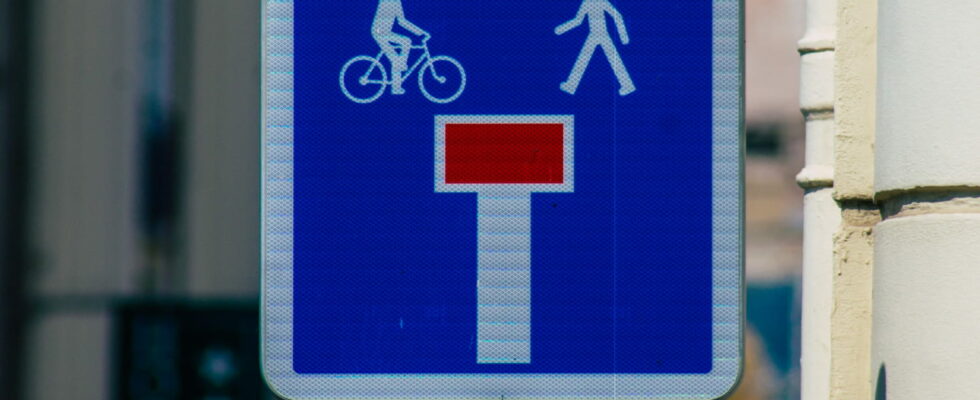A certain number of motorists wonder about this sign, the meaning of which is better known before committing.
In a perfect world, all motorists would know the meaning of every road sign and obey them. The reality is quite different and most drivers only remember the signs most frequently encountered on the road, a far cry from all those learned before the Code exam required to obtain a driving license. It is therefore not uncommon when driving to come across a sign whose meaning you do not know. The consequences can be more or less serious, some of them sometimes indicating immediate danger.
This is not really the case for the C13d panel which appeared for the first time in France at the very end of 2011. However, it is better to know what it means. This square panel on a blue background shows a cyclist and a pedestrian facing each other above a sort of T whose vertical bar is white and the horizontal bar is red. The number of elements can be confusing, especially since it is not aimed at just one category of road users. Is this a lane reserved for cyclists and pedestrians? A road part of which is closed to cyclists and pedestrians? Many interpretations are possible but only one is valid.

You have probably already seen a blue panel filled only with this T whose horizontal bar is drawn in red. It is called C13a and indicates a dead end, more commonly called a dead end. Dead ends are streets that have no exit, that is, they end in a dead end. In other words, it is a dead end road that does not allow you to cross from one side to the other. Dead ends are common in residential areas, often providing a quieter environment with less vehicle traffic. But why then do a cyclist and a pedestrian complete this panel under its name C13d?
Because it indicates that there is an exit at the end of the street for cyclists and pedestrians. This often takes the form of a small path that motorized vehicles, mainly cars and trucks, cannot take due to their narrowness.
Concretely, if you enter this type of street at the wheel of your vehicle you will realize once you arrive at the end that only two solutions are available to you: make a U-turn or reverse. Situations that are not always easy to manage, especially for motorists who don’t really like maneuvering in small spaces…
